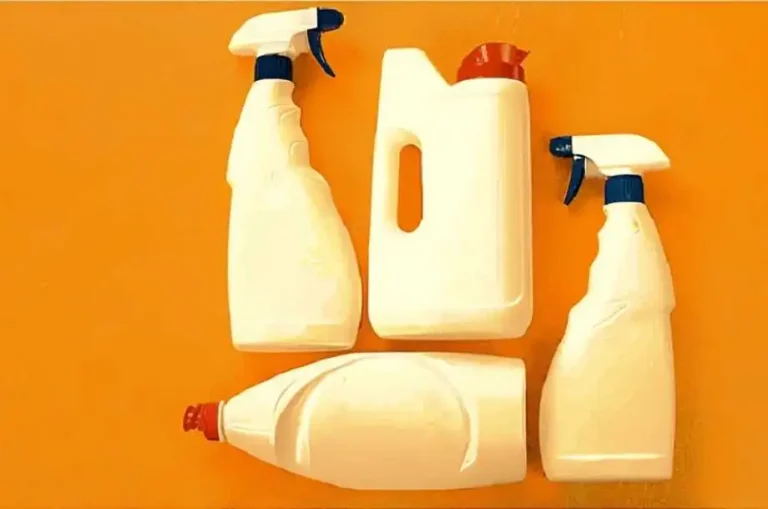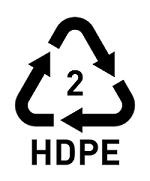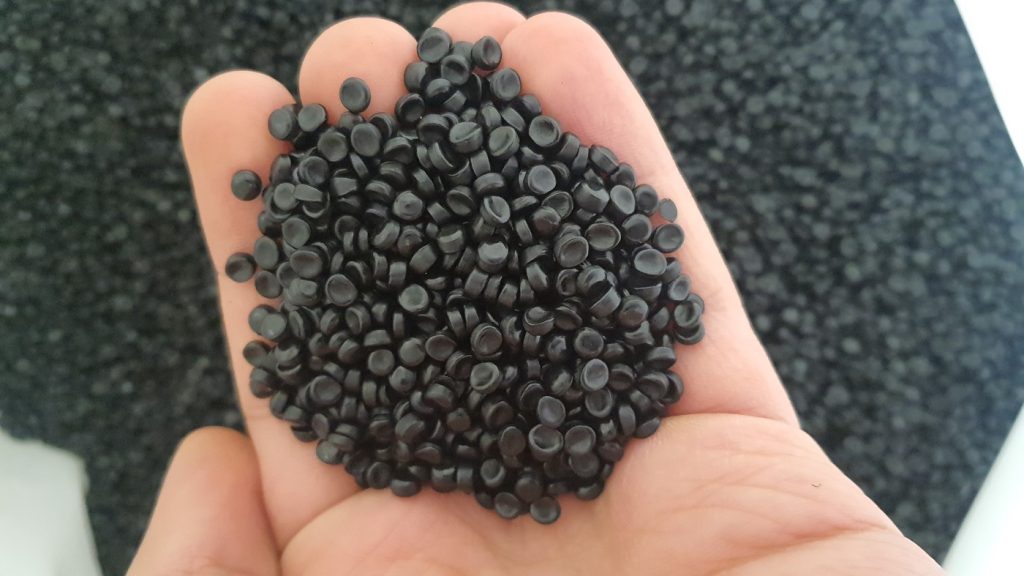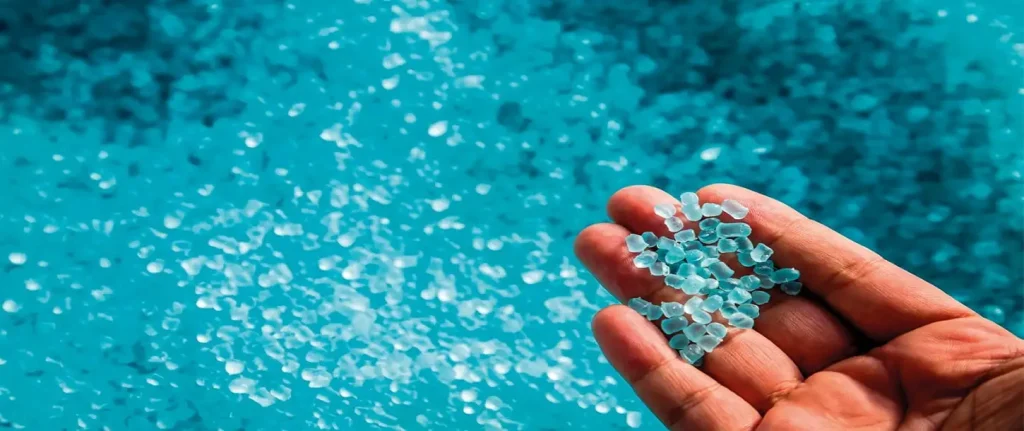HDPE
High-density polyethylene (HDPE) or high-density polyethylene (PEHD) is a thermoplastic polyethylene made from petroleum. For pipes it is sometimes called “alkaline” or “polyethylene”. High-density HDPE is used in the production of plastic bottles, corrosion-resistant pipes, geomembranes and plastic lumber. HDPE is usually recycled and has the number “2” as the resin identification code. In 2007, the global HDPE market reached a volume of more than 30 million tons.
Properties of HDPE
HDPE has suitable mechanical, thermal and chemical properties that make it a versatile and efficient plastic material. Some of the properties of HDPE are:
- Density and high molecular weight:
HDPE has higher density and molecular weight than other types of polyethylene and therefore has higher strength and hardness. The density of HDPE is usually between 0.94 and 0.97 grams per cubic centimeter and its molecular weight can vary from a few thousand to a few million grams per mole.
- Thermoplasticity
HDPE is a thermoplastic material that can be shaped by various methods such as injection, compression, blow molding, extrusion and welding. The softening temperature of HDPE is usually between 120 and 180 degrees Celsius.
- Impact resistance:
HDPE is an impact resistant material that can deform severely without breaking or cracking. This property makes HDPE suitable for making parts that are subject to impact and pressure.
- Resistance to corrosion and moisture:
HDPE is a material resistant to corrosion, moisture, abrasion, puncture and microbial growth. This material also has good electrical and thermal insulation properties and can work in different temperatures.

Applications of HDPE
HDPE is one of the most popular and widely used plastic materials in the world that is used in more than 30 percent of all plastic products. Some of the applications of HDPE are:
- Plastic bottles:
HDPE is used to make plastic bottles for storing liquids such as milk, water, juice, detergent, oil and poisons. HDPE is suitable for this application because it has resistance to penetration, lightness, recyclability and low cost.
- Corrosion resistant pipes:
HDPE is used to make corrosion resistant pipes for transporting water, gas, sewage, chemicals and other liquids HDPE is suitable for this application because it has resistance to corrosion, impact, pressure, temperature and microbial growth. HDPE also has the ability to weld and connect easily.
- Geomembranes:
HDPE is used to make geomembranes or plastic covers for controlling the infiltration of water, gas, chemicals and waste into the soil HDPE is suitable for this application because it has resistance to corrosion, abrasion, puncture and deformation. HDPE also has the ability to be flexible and connect easily.
- Plastic wood:
HDPE is used to make plastic wood or plastic-wood composites for making furniture, flooring, railing, door and window. HDPE is suitable for this application because it has resistance to corrosion, moisture, sun, fire and abrasion. HDPE also has the ability to be moldable and colorable.

LDPE
Low density polyethylene (LDPE) is a thermoplastic made from the monomer ethylene. This was the first grade of polyethylene, which was produced in 1933 by Imperial Chemical Industries (ICI) using a high pressure process via free radical polymerization. Its production uses the same method today. EPA estimates that 5.7% of LDPE (recycling #4) is recycled. Despite competition from more modern polymers, LDPE remains an important plastic grade. In 2013, the worldwide LDPE market reached about $33 billion. While there are different types of polyethylene, the two most common ones are low-density polyethylene (LDPE) and high-density polyethylene (HDPE) Just as PVC and CPVC have kissed their cousins in the polymer world, LDPE and HDPE have a lot in common and many differences.

Low density polyethylene (LDPE) is a thermoplastic made from the monomer ethylene. This was the first grade of polyethylene, which was produced in 1933 by Imperial Chemical Industries (ICI) using a high pressure process via free radical polymerization. Its production uses the same method today.
Properties of LDPE
Low density polyethylene has good and significant physical and mechanical properties, some of its important properties are mentioned below:
- Flexibility and elasticity:
LDPE is a flexible and ductile material that can be stretched and bent without breaking or cracking. This property makes LDPE suitable for making products that require flexibility and elasticity, such as films, bags, tubes, and wires.
- Resistance to chemicals and moisture:
LDPE is a material resistant to most chemicals, moisture, oxidation, and UV radiation. This material also has good electrical and thermal insulation properties and can work in a wide range of temperatures.
- Transparency and brightness:
LDPE is a transparent and glossy material that can be used for packaging, wrapping, laminating, and coating various products, such as food, textiles, paper, and metal. LDPE is suitable for this application because it has sealability and low cost.

Applications of LDPE:
Due to its suitable properties, this polyethylene is used in important parts of the plastic material manufacturing industry, some of the most important of which are:
- Plastic films:
LDPE is used to make plastic films for packaging, wrapping, laminating, and coating various products, such as food, textiles, paper, and metal. LDPE is suitable for this application because it has transparency, gloss, sealability, and low cost.
- Plastic bags:
LDPE is used to make plastic bags for shopping, garbage, storage, and transportation of various items, such as groceries, clothes, books, and toys LDPE is suitable for this application because it has flexibility, durability, and recyclability.
- Plastic pipes:
LDPE is used to make plastic tubes for conveying liquids, gases, and solids, such as water, air, oil, and sand. LDPE is suitable for this application because it has resistance to chemicals, pressure, and abrasion. LDPE also has the ability to be extruded and welded easily.
- Plastic wires:
LDPE is used to make plastic wires for electrical and telecommunication applications, such as cables, cords, and connectors. LDPE is suitable for this application because it has resistance to electricity, heat, and flame. LDPE also has the ability to be colored and coated easily.
Final comparison
LDPE is produced by free radical polymerization that forms longer and shorter branches of any type of polyethylene and reduces its density. Branching prevents the molecular chains from packing tightly in a crystalline form, therefore LDPE has lower tensile strength but higher flexibility. This outstanding formula makes LDPE suitable for a wide range of applications from hard products such as plastic bottles, buckets, and bowls to films such as plastic shopping bags and plastic packaging. Do you eat cereal for breakfast? The cardboard carton lid and plastic bags inside the cereal box are likely made of LDPE.
On the other side of the polymer chain, we have HDPE that is characterized by minimal branching of the polymer chain. Less branching means that the linear molecules pack tightly together in a crystalline form, making HDPE very dense and hard. This extra tensile strength means that HDPE is the PE of choice for applications that require a bit more bone, such as milk and liquid dishwashing containers, trash cans, water pipes, and children’s toys. This is also one of the reasons why HDPE has widely replaced cardboard as the preferred pipe material in firework construction. HDPE pipe is less prone to collapse if a fire engine is working and when the fuse inside the pipe is finished, the HDPE pipe is recyclable.



